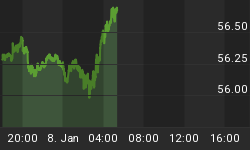The SP500 yearly trend remains up since the index made a higher high and a higher low in 2015. The monthly and the weekly trends are flat, but the daily trend is up since the SPX made a higher high and a higher low in December '15. Despite the selloff during the last hours of the last trading day of the year, price is still above the 50% retracement of the last upswing, meaning that it remains in a strong position:

Market breadth, however, has been steadily declining during the second half of 2015 and is negatively diverging from price. Until this divergence gets resolved one must remain very vigilant:

Looking at the bigger picture, and using 2016 as an anchor, this is what we can expect in the upcoming year.
The 4 year (Presidential) cycle is mostly bullish. There have been 10 bearish years and 22 bullish. The average gain for the bullish years is 16%, and theaverage decline for the bearish years is -13%
Year 6 in the Decennial cycle also has a mixed track record.

Five out of 13 were negative years, seven were positive, and one was break even. Four of the seven positive years occurred in the last 40 years. Looking at the graph, one can make a case for a pretty regular bullish/bearish 40 yearcycle, except that 1936 gets in the way.
According to W.D. Gann, year 6 is a bull year in which the bull campaign which started in the fourth year ends in the fall. That's mostly true,assuming it pertains to year 16 in the 20 year cycle (see below).
Looking at the 7 year cycle, the results are split evenly between bullish and bearish years. The nine bullish years produced an average gain of 20.4%,while the bearish years had an average 13% decline.
Year 16 in the 20 year cycle is mostly bullish:

The 30 year cycle is mostly flat (with the exception of 1986).
The 40 year cycle is strongly bullish (with the exception of 1896).
The 42 year cycle is very bearish, with an average decline of 21%.
The 49 year cycle is mixed: two bullish outcomes and one bearish.
The 60 year cycle is flat.
And the 100 year cycle is flat, although the 50 year cycle is bullish.
In summary, the cycle outlook for 2016 is very mixed. There are certain calendar and seasonal periods that stand out, but we'll discuss those in due time. As usual, we'll continue keeping track of the trend, along with market breadth and momentum studies and analytics, and will do our best to keep youon the right side of the market.
















